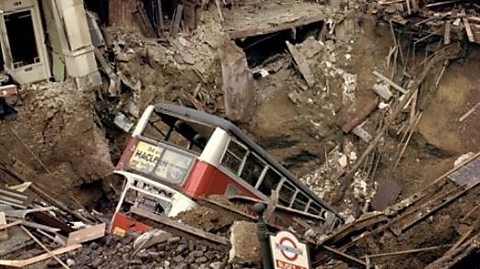Before the countdown
It is 26 July, 1945. For four years, America has been at war with Japan. President Truman issues the enemy an ultimatum: surrender unconditionally or face βprompt and utter destruction.β
Truman wants to bring the conflict to a swift end. He has a new powerful weapon at his disposal, conceived by the nationβs greatest scientific minds. But a day later, Japan responds: it refuses to surrender unconditionally.

00:00 August 4
Briefing Room, Tinian Island
At an American army base on an island in the middle of the Pacific Ocean, a group of young men await a top secret mission briefing.
They have been training for nine months, unaware of the details of their assignment. Now their leader, Colonel Paul Tibbets, addresses them, alongside a ballistics expert. The men are told they will be dropping a bomb with an explosive force of 20,000 tonnes of TNT on a Japanese city. It will destroy everything within a three-mile radius of its impact point. Tibbets later remarked his crew were 'unable to imagine a single bomb with such explosive force.β At that moment, neither could he.

08.32 August 5
Operations HQ, Tinian Island
At the base, Tibbets' men wait to hear when they will be deploying the weapon.
With over 100,000 American lives already lost in the Pacific war, President Truman had feared invading Japan would lead to further bloodshed. Now these men, many of them still in their twenties, have been entrusted with a weapon so powerful, America believes it will end the war almost immediately. The fate of thousands of Japanese and American lives rests in the hands of this young crew.
Meet the rest of the Enola Gay crew. Clips in this timeline are dramatic reconstructions from Days that Shook the World: Hiroshima (ΒιΆΉΤΌΕΔ Two, 2003)
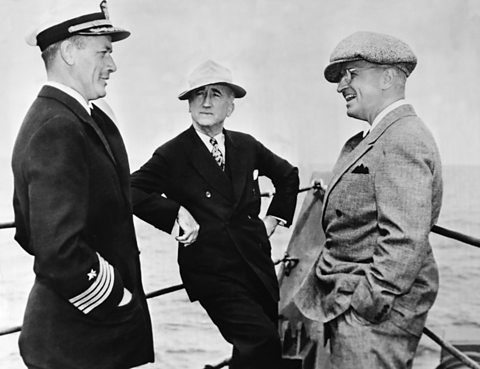
08.47 August 5
Operations HQ, Tinian Island
Today's weather report arrives: clouds over Japan are expected to clear within the next 24 hours.
For General Farrell, the man responsible for launching the mission, it's the news he's been waiting for. These are perfect conditions for dropping the bomb, nicknamed 'Little Boy'. Farrell relays the report to Washington: the bomb will be dropped on August 6. Estimated take off time 02.45. Meanwhile, President Truman is on the USS Augusta, a US navy cruiser in the Atlantic. Having authorised the use of the bomb any time after August 3, all he can do is wait for news.

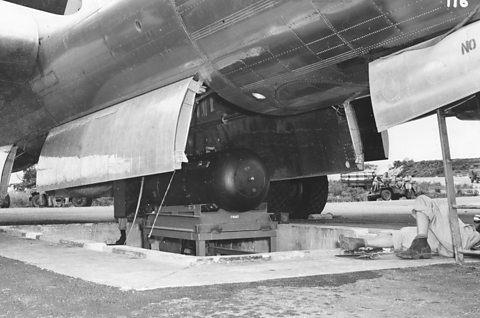
14.00 August 5
Hangar, Tinian Island
Preparations are progressing well. Little Boy is wheeled carefully out of its hanger. But Captain Parsons, an atomic ballistics expert, is concerned.
Two B-29 planes have exploded on take-off in the last 24 hours. If the B-29 carrying Little Boy explodes, the consequences could be catastrophic. He takes a radical decision β both he and his colleague, Lieutenant Morris Jeppson, will arm the bomb in the air. It is a feat not attempted outside a laboratory. Parsons spends the afternoon practising in the 40 degree heat, until his hands begin to bleed.

14.31 August 5
Planning Office, Tinian Island
They will be flying in the early morning, but the crew still do not know which of three cities will be their target: Hiroshima, Kokura or Nagasaki.
Tibbets and bombardier Tom Ferebee have discussed logistics. Ferebee has advised that if Hiroshima is chosen, a t-shaped bridge in the middle of the city would make an effective target. Later that day, Tibbets is handed a package containing 12 cyanide tablets. If the mission fails and they face interrogation, he is told a pill kills a man painlessly and quickly. Tibbets does not tell his men about the pills, so as not to alarm them.
Paul Tibbets explains why he named his plane, which would carry the atomic bomb, Enola Gay. Clip from Days that Shook the World (ΒιΆΉΤΌΕΔ Two, 2003).
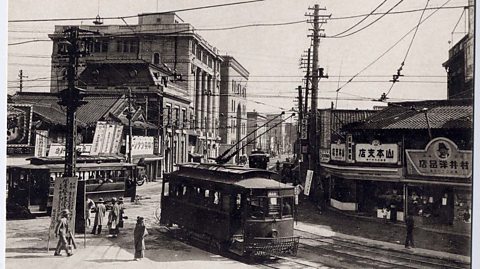
15.00 August 5
Hiroshima, Japan
1,560 miles north of Tinian is the Japanese city of Hiroshima. It is densely populated and one of the chief supply depots for the Japanese army.
The Americans have subjected Japanese cities to a brutal fire-bombing campaign. It's thought nearly 100,000 people have perished in Tokyo, and approximately 900,000 civilians killed across Japan. But Hiroshima has not been targeted. Although B-29 planes have been flying over the city, they never drop bombs. Japanese civilians have become so accustomed to the planes, they have given the B-29 a nickname. Residents of Hiroshima do not know their city has been spared in order to test a new weapon.

20.06 August 5
Hiroshima, Japan
For the residents of Hiroshima, the day is drawing to a close.
Commuters have returned home from work, teenagers are doing their homework and parents are putting children to bed. Tomorrow, many of these children will be helping to clear fire lanes in the middle of the city, near a t-shaped bridge. It is a precautionary measure, in case Hiroshima is subjected to a fire bomb attack. Although exhausting work, the weather forecast for tomorrow predicts a clear, sunny day.
Stories of the night before the attack. Clip from Days that Shook the World: Hiroshima (ΒιΆΉΤΌΕΔ Two, 2003). Image: Hiroshima Peace Memorial Museum.
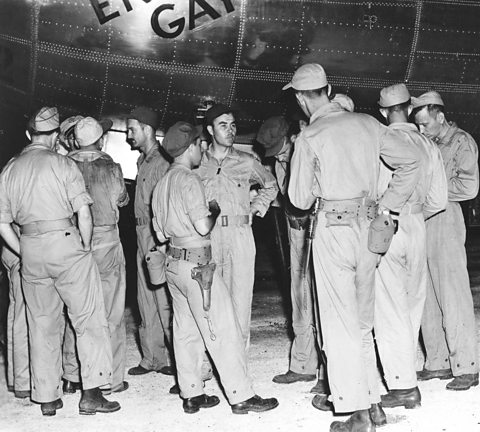
00:02 August 6
Briefing Room, Tinian Island
The men have filled the remaining hours with sunbathing, radio and games of softball. Now they assemble for their final briefing.
The strike force will consist of three planes: Enola Gay, which will carry the bomb, The Great Artiste and β as it was later named β Necessary Evil. Three weather planes will fly an hour ahead and, based on their weather reports, Tibbets will decide which city to attack. The flight will last twelve hours. A chaplain offers a prayer for the crews, before the men file out in silence. They eat a hearty breakfast of pancakes, eggs and sausages, all aware it may be their last.

02.45 August 6
Runway, Tinian Island
Bathed in arc lights, the crew pose for photographs before boarding. They are told they will soon be more famous than Clark Gable.
Soon after take-off, the crew settle into their in-flight routine. As they have had little sleep in the past 48 hours, some crew members use this time to rest. General Farrell informs the Pentagon the flight is on route. Meanwhile, in his stateroom on the USS Augusta, President Truman retrieves a dossier due to be released 16 hours after the dropping of the bomb. For now, the target city is left blank.
Crew posing in front of the plane before take off. Meanwhile, the Pentagon awaits news. Clip from Days that Shook the World (ΒιΆΉΤΌΕΔ Two, 2003)
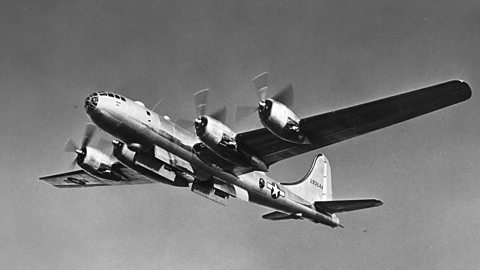
06.27 August 6
Cockpit, Enola Gay
The Enola Gay is closing in: the bomb is now 300 miles from the Japanese coast. The strike force has not been intercepted by any Japanese aircraft.
Parsons has completed various stages of arming the bomb and now it is down to his colleague, weapons specialist Morris Jeppson, to finish the job. Although Jeppson is an expert, as Parsons knows, there is nothing quite like arming a nuclear bomb at 5,000 ft. Jeppson works in a space little wider than a foot. Minutes later, his work is complete β Little Boy is live. But even now, no one on board the Enola Gay knows its final destination.

07.31 August 6
Hiroshima, Japan
A weather plane reaches Hiroshima. The sky over the city is clear.
On the ground, a yellow alert rings out for 22 minutes. Many civilians ignore it, unperturbed by the familiar sight of a single B-29 plane flying over the city. The weather plane sends a coded message to Enola Gay, advising that Hiroshima is to be the primary target. Tibbets notifies his crew over the intercom and the plane begins its final ascent to 31,000 ft. Earlier, tail gunner and keen photographer Bob Caron moved to the rear of the plane. He is ready to take a photograph for posterity.
Reconstruction of the moments before Enola Gay dropped the bomb on Hiroshima. Clip from docudrama Days that Shook the World: Hiroshima (ΒιΆΉΤΌΕΔ Two, 2003)
08.15 August 6
Hiroshima, Japan
The bomb is released. On detonation, the temperature at the burst-point of the bomb reaches several million degrees.
A nuclear shockwave tears through the city in seconds, obliterating 60,000 buildings. It is estimated nearly 100,000 men, women and children are killed by the intense heat, blast and radiation. The crew of the Enola Gay watch the rising mushroom cloud, the city below now transformed into fiery black chaos. The Pentagon receives a coded message: 'Successful in all aspects. Visible effects greater than Trinity test. Target Hiroshima.'
Hear the account of a photographer who was in Hiroshima when the atomic bomb hit. Clip from Days that Shook the World: Hiroshima (ΒιΆΉΤΌΕΔ Two, 2003)
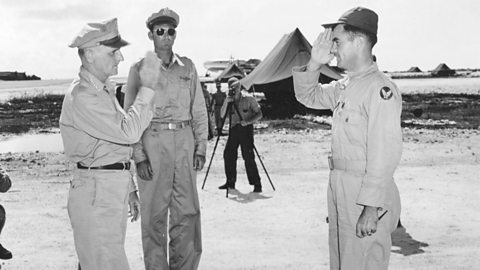
10.50am August 6
White House, Washington
Reporters sit in the Briefing Room. They are informed that a bomb with the explosive force of 20,000 tonnes of TNT has been dropped on Japan.
The news is soon broadcast on national radio and, the next morning, published on the front pages of Americaβs newspapers. Little Boy is hailed as the βbomb that changed the worldβ. For the men who developed the atomic bomb and masterminded the mission, their families and the rest of the world finally know the top secret mission they have been working towards.

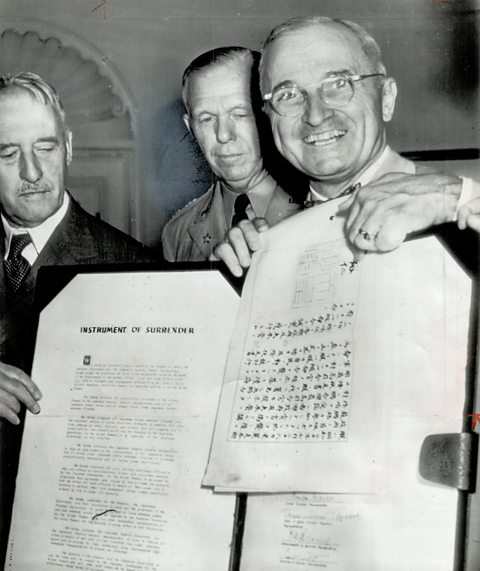
August 15
Japan
An unfamiliar voice crackles from Japanese radios. For the first time ever, Emperor Hirohito is addressing his people.
He speaks in classical Japanese, making it difficult for some citizens to fully comprehend what he is saying. After the dropping of a second atomic bomb on the city of Nagasaki, he has ordered Japanβs surrender. Despite two devastating attacks on the country, many people are shocked β the Japanese Empire has maintained it would be more noble to endure annihilation than surrender to the enemy. On August 14, Japanβs war minister had attempted suicide and dies the following day.

August 15
United States
In cities across the United States, thousands of Americans are taking to the streets to celebrate. Japan has finally surrendered.
The crew of the Enola Gay were hailed as heroes: they were cheered at victory parades, appeared on magazine covers and, in later years, relayed stories of their experiences on television shows. Like President Truman, many of the crew maintained their actions on August 5 brought the war to a swift end and prevented further loss of life. Although there are no definitive figures, it is estimated that 200,000 people were killed as a result of the atomic bombs dropped on Hiroshima and Nagasaki.
Americans celebrate the surrender of Japan. Clip from Days that Shook the World: Hiroshima (ΒιΆΉΤΌΕΔ Two, 2003)
Learn more about this topic:
WW2: Was it right to bomb Hiroshima? document
The nuclear bombing of Japan in 1945 is widely credited with hastening the end of the war. Even if true, was it ethical to drop the bomb?
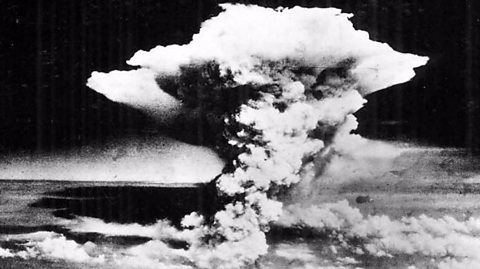
WW2: History's most savage and devastating war. document
A timeline of the most destructive global conflict in history, from the ferocious attacks Nazi Germany unleashed across Europe, to the atomic bombs dropped on Hiroshima and Nagasaki.
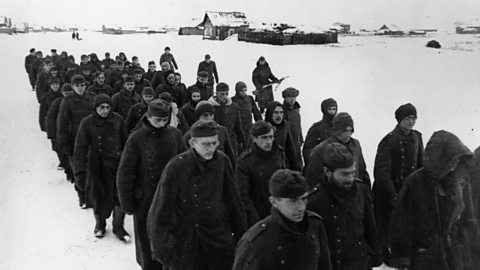
WW2: What would you have done when the bombs fell? document
The Blitz of WW2, sometimes known as the London Blitz, was the German bombing campaign that lasted eight months and targeted 16 British cities.
